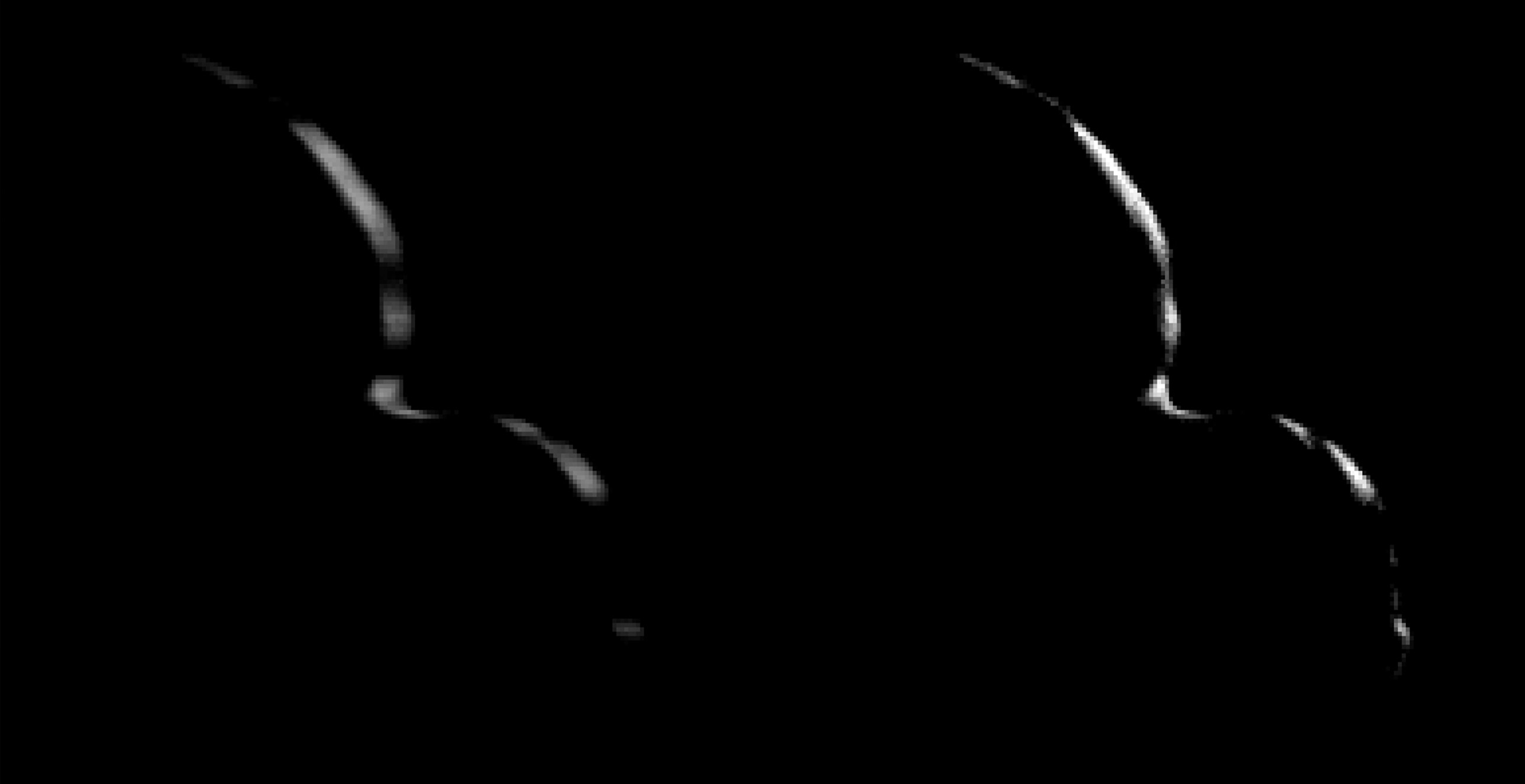Create a free profile to get unlimited access to exclusive videos, sweepstakes, and more!
New Horizons’ last glimpse of Ultima Thule reveals how this already weird object is even weirder

Even after New Horizons said goodbye to Ultima Thule, its final glimpse has revealed something completely unexpected.
We have never explored a world more distant than the mysterious Kuiper Belt object (KBO) otherwise known as 2014 MU69 or Ultima Thule. It first wowed Earth after a New Year’s Day flyby that beamed back an image somewhat resembling a space snowman or BB-8. We’ve had a clearer view since then. Now the eerie outline that was just released has revealed even more about its shape than scientists anticipated.
Ultima Thule first seemed to be an amalgam of two vaguely spherical objects, but the new image is telling us that appearances can be deceiving, especially at 4.1 billion miles away. The departure images are changing the view from spherical to more like what NASA calls “a giant pancake” for larger lobe Ultima and “a dented walnut” for smaller lobe Thule. While this is definitely not the most flattering comparison, there is a reason it is so fascinating.
“We had an impression of Ultima Thule based on the limited number of images returned in the days around the flyby, but seeing more data has significantly changed our view,” said mission Principal Investigator Alan Stern. “It would be closer to reality to say Ultima Thule’s shape is flatter, like a pancake. But more importantly, the new images are creating scientific puzzles about how such an object could even be formed. We’ve never seen something like this orbiting the Sun.”
Ultima Thule has shown this new side of itself because New Horizons took its final images from a different angle than the one used as it approached the object. The spacecraft took the central frame of the image sequence 5.494 miles away from Ultima as it whizzed through space at 31,000 mph. That glowing crescent visible in the darkness was actually blurred in the individual frames due to the extended exposure time used to give the camera’s signal level a boost during what was a really rapid scan.
For that ghostly outline to emerge, the science team needed to combine and sharpen multiple images. Background stars, many of which are visible in the individual images, were a defining factor in bringing this image of Ultima Thule out of the dark. By watching which ones “blinked out” as Ultima passed in front of them, the scientists were able to outline the object’s strange shape.
“While the very nature of a fast flyby in some ways limits how well we can determine the true shape of Ultima Thule, the new results clearly show that Ultima and Thule are much flatter than originally believed, and much flatter than expected,” said New Horizons project scientist Hal Weaver. “This will undoubtedly motivate new theories of planetesimal formation in the early solar system.”
New Horizons may have moved on from Ultima Thule, but it still has plenty of images stored in its robotic brain. We can only wait to see how sci-fi this gets.
(via NASA)


























